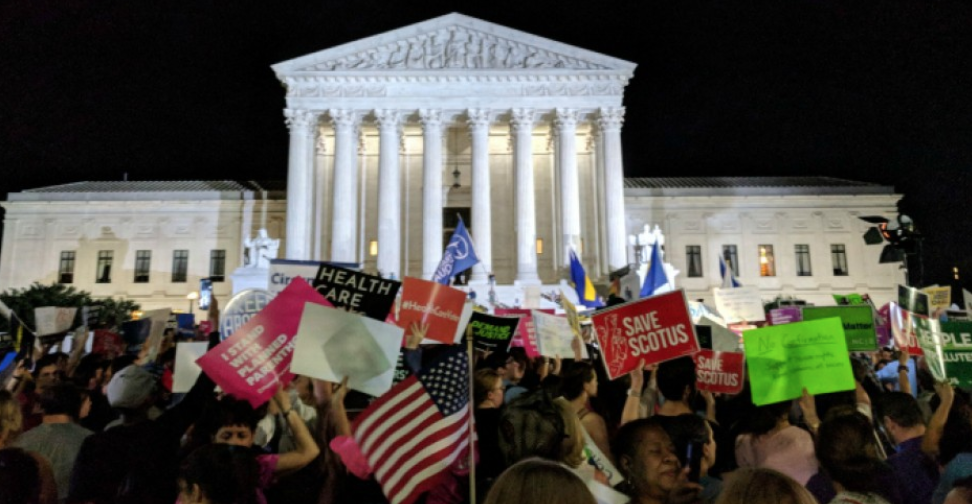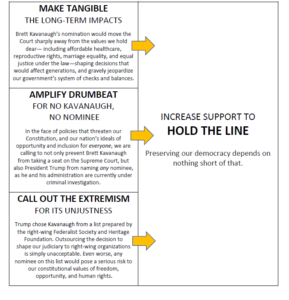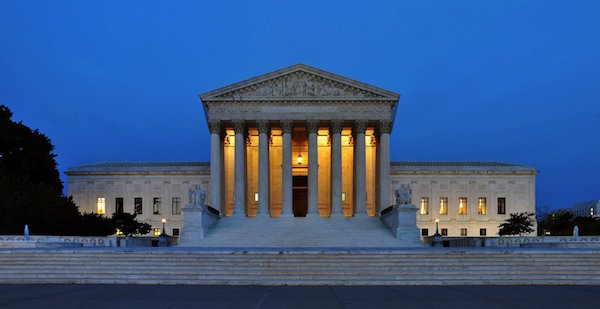Acknowledgements
We wish to acknowledge the assistance that a wide range of fair housing experts, researchers, and former federal officials provided in the preparation of this report. We are particularly grateful for the input of Roger Bearden, Marianne Engelman Lado, Sara Pratt, Florence Wagman Roisman, and Philip Tegeler.
Table of Contents
Executive Summary
Summary of Recommendations
- The AFFH Requirement and the Analysis of Impediments Process
- Current AFFH Regulations
II. Problems with Current Enforcement
- Problems with the AI Process for Jurisdiction-Wide Compliance
- Failure to Further Fair Housing in Specific Programs and Activities
- Lack of Integration with other Equal Opportunity Provisions
III. Recommendations to Improve the AFFH Regulations
- Reforming the Jurisdiction-Wide AI Process
- Clear Fair Housing Metrics
- Data Collection Guidelines
- Improved Public Input Mechanisms
- Accountability Measures
- Ensuring Fair Housing Compliance in Individual Federally Funded Projects
- Elements of the Opportunity Impact Statement
IV. Improving Enforcement and Funding Decisions
V. Incorporating Examples
Appendix: Proposed Regulations
Executive Summary
We are pleased to submit recommendations toward the revitalization of HUD’s duty to administer its programs and activities “in a manner affirmatively to further the policies of [the Fair Housing Act].”1 This responsibility is crucial to the Department’s mission “to increase homeownership, support community development and increase access to affordable housing free from discrimination,”2 and to our nation’s pursuit of greater and more equal opportunity for all.
The economic and social benefits of fair housing and stable, integrated communities for people of all backgrounds are well documented.3 And the principle that federal funds and subsidies administered by the Executive Branch are not to be used for discriminatory purposes is a longstanding and well- accepted corollary to the constitutional guarantee of equal protection under the laws.4
Accordingly, the duty to “affirmatively further fair housing” (AFFH) applies not only to programs administered directly by HUD, but also to public and private housing and urban development activities receiving federal funding from HUD or any other federal agency.5 With respect to these fund recipients, moreover, the AFFH requirement fits within a broader framework of existing regulations prohibiting all forms of discrimination in federally funded programs and activities.6 As such, the AFFH mandate has the potential to trafnsform America’s communities over time and to redress our nation’s troubling legacy of housing discrimination and residential segregation, often at the hands of government.7
Yet, despite some important advances over the years, research and experience show that the promise of the AFFH duty has never been fully realized. Existing regulations do not provide adequate specificity, procedures, or accountability measures, especially as they relate to federal fund recipients. Enforcement over the years has been largely passive and, at times, non-existent. And the AFFH obligation has never been adequately integrated with other equal opportunity protections governing federally funded programs.
For these reasons, we are particularly pleased that the Department is engaged in reformulating the AFFH regulations and their enforcement. We believe that each of the shortcomings described above can be overcome through this process, and that federal funding can contribute to the kind of fair and equitable housing that benefits our entire society.
The recommendations that follow focus on HUD’s responsibilities relating to recipients of federal funds engaged in housing and urban development activities. Although we do not address in this report HUD’s direct administration of activities such as the Section 8 voucher program, we support the recommendations made in this regard by the Leadership Conference on Civil Rights and other fair housing and public interest groups.8
Summary of Recommendations
Based on a large body of research and experience, we recommend the following changes to HUD’s AFFH regulations and implementation, discussed in greater detail herein, as they relate to federally funded activities:
- That the Department monitor and enforce grantees’ jurisdiction-wide affirmative fair housing obligations through a revised Analysis of Impediments process that includes: (a) clearly stated metrics for the assessment of fair housing impediments and actions to overcome them; (b) explicit guidelines for data collection and analysis by HUD and its grantees; (c) modernized mechanisms for public input; and (d) a meaningful system of pre- and post-award review.
- That, in addition to the jurisdiction-wide AI process, the Department require fund recipients to conduct and submit periodic assessments of the fair housing and other federally-protected equal opportunity impacts of specific programs and activities undertaken with federal funds.
- That both jurisdiction-wide and program-specific processes incorporate the consideration of indicators of housing opportunity supported by established research and experience; and
- That the Department complement submission requirements and technical assistance to fund recipients with a rigorous system of periodic, unannounced audits of a subset of applicants and recipients to be chosen through random selection and other factors.
This report describes in further detail each of these recommendations, as well as the considerations behind them and suggested implementation methods. We look forward to working with the Department, as well as with fund recipients and civil society partners, to make these and other changes a reality.
I. The AFFH Requirement and the Analysis of Impediments Process
Section 3608(e)(5) of the Fair Housing Act requires HUD to “administer the programs and activities relating to housing and urban development in a manner affirmatively to further the policies of [the Fair Housing Act].”9 The Act seeks “to provide, within constitutional limitations, for fair housing throughout the United States”;10 to “remove the walls of discrimination which enclose minority groups”;11 and to foster “truly integrated and balanced living patterns.”12 In other words, the Fair Housing Act requires HUD to proactively promote non-discrimination, residential integration, and equal access to the benefits of housing.
Section 3608 imposes an “affirmative” obligation, requiring HUD to do something “more than simply refrain from discriminating . . . or from purposely aiding discrimination by others.”13 To the contrary, “[a]ction must be taken to fulfill, as much as possible, the goal of open, integrated residential housing patterns and to prevent the increase of segregation[.]”14 Furthermore, HUD has an obligation to act regionally where necessary to further the goal of integrated housing.15
The mandatory provisions of Section 3608 apply not only to HUD, but also to its grantees.16 Thus, HUD will have violated Section 3608(d)(5) when it is “aware of a grantee’s discriminatory practices and has made no effort to force it into compliance with the Fair Housing Act by cutting off existing federal financial assistance to the agency in question.”17
And the requirement applies beyond HUD-funded activities as well, extending to all “programs and activities relating to housing and urban development” that are administered within the purview of Federal regulatory or supervisory authority.18 These programs and activities include those “operated, administered, or undertaken by the Federal Government; grants; loans; contracts; insurance; guarantees; and Federal supervision or exercise of regulatory responsibility (including regulatory or supervisory authority over financial institutions).”19 In other words, HUD’s regulations should set out the AFFH obligations applicable to all federal funding entities, including but not limited to HUD itself, as well as their respective grantees.
Executive Order 12892, signed by President Clinton in 1994, provides that “the Secretary of Housing and Urban Development shall, to the extent permitted by law . . . promulgate regulations . . . that shall,” among other things:
(3) describe the responsibilities and obligations of executive agencies in ensuring that
programs and activities are administered and executed in a manner that furthers fair
housing; (4) describe the responsibilities and obligations of applicants, participants, and
other persons and entities involved in housing and urban development programs and
activities affirmatively to further the goal of fair housing; and (5) describe a method to
identify impediments in programs or activities that restrict fair housing choice and
implement incentives that will maximize the achievement of practices that affirmatively further fair housing.20
a. Current AFFH Regulations
In contrast to that robust mandate, current HUD regulations implementing the AFFH duty in the federal funding context provide only a skeletal outline of steps necessary to uphold the duty. For example, HUD regulations governing Community Development Block Grants, 24 C.F.R. Part 570, provide that:
The [Housing and Community Development Act of 1974] requires the state to certify to
the satisfaction of HUD that it will affirmatively further fair housing. The act also
requires each unit of general local government to certify that it will affirmatively further
fair housing. The certification that the State will affirmatively further fair housing shall
specifically require the State to assume the responsibility of fair housing planning by (1)
Conducting an analysis to identify impediments to fair housing choice within the State;
(2) Taking appropriate actions to overcome the effects of any impediments identified
through that analysis; (3) Maintaining records reflecting the analysis and actions in this
regard; and (4) Assuring that units of local government funded by the State comply with
their certifications to affirmatively further fair housing.21
Similarly, 24 C.F.R. Part 91, governing fund recipients’ Consolidated Plans (“Consolidated Submissions for Community Planning and Development Programs”), merely repeats the AFFH certification requirement. For instance, 24 C.F.R. § 91.225(a) provides that entitlement communities receiving funds under specified Community Planning and Development programs must certify “satisfactory to HUD,” that they “will affirmatively further fair housing, which means that [they] will conduct an analysis to identify impediments to fair housing choice within the jurisdiction, take appropriate actions to overcome the effects of any impediments identified through that analysis, and maintain records reflecting the analysis and actions in this regard.”22
Under current practice, the Analysis of Impediments (AI) is not submitted to or approved by HUD, although Consolidated Plan guidelines indicate that each jurisdiction “should maintain its AI and update the AI annually where necessary.”23 In other words, HUD’s role in the current AI process is a largely passive one that relies on the commitment and proficiency of federal fund recipients. Nor do the regulations provide sufficient guidance as to the minimally necessary indicators or actions that an AI should contain.
The Fair Housing Planning Guide, last published by HUD in 1996 and available online, 24 provides more detailed guidance and recommendations for fulfilling the fair housing requirements of the Consolidated Plan and CDBG regulations. The Consolidated Plan process is driven in large part by individual jurisdictions, which must themselves “take and/or describe specific actions and initiatives relevant to the preparation of the consolidated plan,” 25 based on consultation and coordination with state and local agencies, groups, and organizations working within the particular jurisdiction. To provide guidance to individual jurisdictions, the Planning Guide sets forth a series of questions and considerations that the jurisdictions should take into account in developing their Consolidated Plan, and concerning, among others: collaboration and partnership in developing the plan; leadership of the process; citizen participation as part of the plan development; the analyses necessary to assess housing and homelessness needs and the relevant housing market; and a strategic plan for the jurisdiction going forward. 26 The Planning Guide describes HUD’s review of the Consolidated Plan by stating, “the Department will carefully review the performance indicators under the Consolidated Plan to measure the jurisdiction’s progress toward meeting its goals,” and that “HUD is committed to working with communities to make the process productive and the results real.” 27
II. Problems with Current Enforcement
While the Fair Housing Planning Guide provides useful information, there is a significant and detrimental gap between the highly general requirements of the current AFFH regulations and the highly specific and often voluntary recommendations in the Planning Guide and related documents. Concretizing these elements as regulations rather than solely in administrative guides or memo- randa is crucial, because of the legal authority that regulations carry within and outside the Federal government, as well as the deference that courts afford agency regulations that construe statutory provisions within their domain. 28 Importantly, moreover, the current regulations do not fulfill the Secretary’s obligation to “promulgate regulations” that “describe the responsibilities and obligations of applicants, participants, and other persons and entities” 29 or that “describe a method to identify impediments . . . and implement incentives that will maximize the achievement of practices that affirmatively further fair housing.” 30 More broadly, the current regulations fail to fulfill the letter or spirit of the Fair Housing Act.
In addition to the facial shortcomings of the current AFFH regulations, experience in the field has made clear that these existing mechanisms, while necessary, have been insufficient in practice to further fair housing.31 In particular, (1) the jurisdiction-wide AI process, as described in current regulations, fails to prescribe specific criteria and metrics for assessing and remedying impediments to fair housing; (2) the current AI and Consolidated Plan system does not facilitate monitoring of, or compliance with, AFFH or other Equal Opportunity requirements in specific federally-funded projects; (3) the factors considered by the current process are overly narrow to assess and promote fair housing; and (4) there is a lack of credible or effective pre- or post-award review. We describe these problems in somewhat greater detail below.
b. Problems with the AI Process for Jurisdiction-Wide Compliance
A range of housing experts, civil rights groups, and former HUD officials have documented the inadequacy of the current AI process. For example, according to testimony by Dr. Jill Khadduri, who “[d]uring the final 17 of [her] 26 years at HUD . . . was Director of the Division of Policy Development,”32 instead of evaluating a grantee’s AI to determine whether its project or program should have been funded, HUD field staff “simply look[] for the certification that the jurisdiction ha[d] completed such an analysis at some time, which may [have been] several years earlier.”33 It was “very rare,” she testified, that a prospective grantee’s Consolidated Plan (which certifies that the AI has been completed, actions are being taken to overcome identified impediments, and records are maintained reflecting the analysis and action) was “disapproved at the field office staff level and even rarer that the disapproval [wa]s sustained by higher-level HUD decision-makers and a jurisdiction [wa]s denied its funding allocations.” 34
Similarly, a bipartisan fair housing panel chaired by former HUD Secretaries Cisneros and Kemp found that the AI process is ineffective, due largely to the absence of specific regulations regarding the necessary elements of an AI, or the criteria for approval:
HUD does not require that AIs be reviewed or approved . . . as a condition of funding
and there are no HUD regulations that identify what must be included in an AI, not even
a requirement that efforts must be made to reduce existing segregation, consider
residential living patterns in the placement of new housing, or promote fair housing
choice or inclusivity. 35
The same report noted that “HUD requires no evidence that anything is actually being done as a condition of funding, and it does not take adverse action if jurisdictions are directly involved in discriminatory action or fail to affirmatively further fair housing.”36
Similarly, the current mechanisms provide insufficient data for monitoring, compliance, or enforcement. Collecting and analyzing data regarding characteristics of Americans benefited or burdened by HUD programs is crucial to protecting and furthering fair housing. Accordingly, the Fair Housing Act provides that the Secretary shall:
annually report to the Congress, and make available to the public, data on the race,
color, religion, sex, national origin, age, handicap, and family characteristics of persons
and households who are applicants for, participants in, or beneficiaries or potential
beneficiaries of, programs administered by the Department to the extent such
characteristics are within the coverage of the provisions of law and Executive orders
referred to in subsection (f) of this section which apply to such programs (and in order to
develop the data to be included and made available to the public under this subsection,
the Secretary shall, without regard to any other provision of law, collect such information
relating to those characteristics as the Secretary determines to be necessary or appropriate). 37
Yet, the current AFFH system fails reliably to collect or analyze the data necessary to fulfill the Department’s responsibility. As a result, even potential individual complainants who suspect a broader pattern of noncompliance are often frustrated by a lack of reliable information.
In practice, moreover, jurisdictions have not uniformly analyzed demographic housing patterns, or identified significant impediments relating to race and other characteristics covered by the Fair Housing Act. As you know, Westchester County recently settled a suit alleging that, in the face of strong evidence of racial segregation within the county, Westchester repeatedly certified that it was affirmatively furthering fair housing using the existing AI process.38Although Westchester submitted periodic AIs and continued to receive HUD funding, plaintiffs documented that the county’s AIs failed to mention race discrimination or racial segregation, and included “no analysis of whether [those dynamics] might operate to diminish fair housing choice.”39 Using an analysis which a federal court later invalidated,40 Westchester County argued that income was a “better proxy for determining need than race when distributing housing funds,” and that race was “not among the most challenging impediments” to fair housing in Westchester.41
Experience shows that the Westchester County case is just the tip of the iceberg regarding non-compliance and the failure of the AI process to hold grantees accountable.
More robust and modernized public input mechanisms are also needed. In the case of Westchester County, plaintiffs provided evidence that the historically segregative impact of the county’s hous- ing policies was furthered in part because “Westchester refused to identify or analyze community resistance to integration on the basis of race and national origin as an impediment.”42 If HUD had enabled, or Westchester County had allowed, fair housing advocates or community members within the region to submit public comments or research specifically addressing the resistance of particular communities within the county to integration, the county would likely have been required publicly to take those considerations into account and work against them in its housing policy, in order to receive approval of its AI.
a. Failure to Further Fair Housing in Specific Programs and Activities
Historically, the Department has applied the AFFH requirement only at a generic, jurisdiction-wide level, inquiring what a putative fund recipient plans to do to advance fair housing across its jurisdiction, and detached from any specific, federally-funded project.43While this is an important inquiry, it means that even close scrutiny of a grantee’s AI is unlikely to spot plans or actions by the grantee that could, nonetheless, hamper fair housing or affirmatively discriminate, in violation of the AFFH requirement.
For example, a jurisdiction’s AI might identify discrimination by private real estate agents as a major impediment to fair housing, and propose specific action to address that impediment—e.g., through law enforcement and educational efforts. However, the same jurisdiction might simultaneously pursue a pattern of siting federally-subsidized affordable housing in a segregative manner and in locations that are physically distant from employment, schools, and other opportunities.
The jurisdiction-wide AI process, even with the improvements that we recommend, will be insufficient to ensure that federal dollars further fair housing. Nor is relying solely on individual complaints sufficient to further fair housing at this important level.
While the AI and Consolidated Plan system, at best, ensures that entities receiving federal funds are doing something to address some impediments to fair housing, the text of the Fair Housing Act commands that the Secretary “administer the programs and activities relating to housing and urban development in a manner affirmatively to further the policies of this title.” 44
The jurisdiction-wide AI process must be complemented by a more specific program-based obliga- tion. While individually policing every federally subsidized housing activity may not be feasible, there is a need for an “institutionalized method” to further fair housing in these programs and activities. 45
c. Lack of Integration with other Equal Opportunity Provisions
In addition to inadequately implementing the AFFH requirement, the current approach disconnects the AFFH inquiry from the other equal opportunity protections that HUD must also enforce in federally-funded projects, such as Title VI of the Civil Rights Act of 1964, which prohibits racial discrimination, whether intentional or in effect, in any federally funded program or activity.46 For example, HUD regulations, 24 C.F.R. Part 1, separately detail the equal opportunity obligations of federal fund recipients under Title VI, and require reporting on compliance:
Each recipient shall keep such records and submit to the responsible Department
official or his designee timely, complete, and accurate compliance reports at such times,
and in such form and containing such information, as the responsible Department official
or his designee may determine to be necessary to enable him to ascertain whether the
recipient has complied or is complying with this part 1. In general, recipients should have
available for the department racial and ethnic data showing the extent to which members
of minority groups are beneficiaries of federally assisted programs. 47
Additional HUD regulations govern non-discrimination on the basis of gender in education pro- grams or activities receiving federal funds (Part 3); equal employment opportunity without regard to race, color, religion, sex, national origin, age or disability (Part 7); nondiscrimination based on disability (Parts 8 and 9); and small, minority, and women’s business enterprises (Part 85).
The AFFH requirement is qualitatively different from most of these other obligations, because it is an affirmative duty to further fair housing, rather than a “negative” duty to refrain from discriminating intentionally or in practice. Nonetheless, in many cases the data collection, reporting, and nondiscrimination obligations that these various provisions impose on HUD and its grantees are similar or overlapping. In the name of efficient and effective equal opportunity enforcement, and to streamline grantees’ reporting obligations, the Department’s implementation of the AFFH duty should be coordinated with the enforcement of other equal opportunity obligations attached to federal funds, wherever possible.
III. Recommendations to Improve the AFFH Regulations
In order to address the serious shortcomings of the current AFFH regulations as they relate to federally funded activities, we recommend:
- That the Department monitor and enforce grantees’ jurisdiction-wide affirmative fair housing obligations through a revised Analysis of Impediments process that includes (a) clearly stated metrics for the assessment of fair housing impediments and actions to overcome them; (b) explicit guidelines for data collection and analysis by HUD and its grantees; (c) modernized mechanisms for public input; and (d) a meaningful system of pre- and post-award review.
- That, in addition to the jurisdiction-wide AI process, the Department require fund recipients to conduct and submit periodic assessments of the fair housing and other federally-protected equal opportunity impacts of specific programs and activities undertaken with federal funds.
- That both jurisdiction-wide and program-specific processes incorporate the consideration of indicators of housing opportunity supported by established research and experience; and
- That the Department complement submission requirements and technical assistance to fund recipients with a rigorous system of periodic, unannounced audits of a subset of applicants and recipients to be chosen through random selection and other factors.
We discuss these elements in greater detail below.
a. Reforming the Jurisdiction-Wide AI Process
With respect to the current system of jurisdiction-wide analysis of impediments and remedial action, we propose clear and strengthened metrics, data collection, public input mechanisms, and account- ability measures.
i. Clear Fair Housing Metrics
Definition of Impediments
In order effectively to fulfill the AFFH duty, HUD regulations should expressly provide that potential impediments to fair housing that should be assessed include, but are not limited to:
- Any public or private actions, omissions, policies, or decisions which have the purpose or effect of restricting housing choices or the availability of housing choices on the basis of race, color, religion, sex, disability, familial status, or national origin.48
- Any public or private actions, omissions, policies, or decisions which have the purpose or effect of segregating or concentrating residents based on race, color, religion, disability, or national origin.49
- Any public or private actions, omissions, policies, or decisions which have the purpose or effect of limiting access to opportunities associated with housing on the basis of race, color, religion, sex, disability, familial status, or national origin.50
This regulatory language would clarify, based on established law, that impediments to fair housing (a) may arise from private as well as public sources; (b) may result from actions and failures to act, as well as from official policies; (c) may stem from intentional discrimination or from facially neutral actions that deny fair housing in practice; and (d) can entail segregative forces as well as exclusionary or discriminatory ones.
The proposed criteria also make clear that impediments to fair housing may take the form of limited access to opportunities associated with housing—such as a municipality’s pattern of siting low-income, disproportionately minority housing in locations distant from education, employment, health care, or other opportunities associated with viable residential housing.
Action to Overcome Impediments
The regulations should provide that the grantee’s proposed actions to overcome the effects of any impediments identified through its analysis must promise, realistically and meaningfully, to reduce those effects and affirmatively to further fair housing. In other words, there must be a nexus between the identified impediments and the proposed activities, and the proposed remedial efforts must demonstrate, objectively and to the Department’s satisfaction, that the impediments are likely to be reduced as a result of the proposed activities.
In addition, the regulations should provide that federal funds must not be used in a manner that will exacerbate or perpetuate impediments to fair housing, whether identified in the Analysis of Impediments or otherwise. And they should make clear that post-award analyses and status reports must document the implementation of proposed and other actions to address impediments to fair housing and provide sufficient data and information to document the effectiveness and impact of those actions.
ii. Data Collection Guidelines
Collection of relevant, accurate data is crucial to the furtherance of fair housing. Accordingly, revised HUD regulations should provide that jurisdictions must include in their analyses of impediments the collection and reporting of relevant demographic patterns and concentrations of racial, ethnic, religious, linguistic, or income groups, as well as people with disabilities, as reflected in federal, state, and other reliable sources of data and information. The Analysis of Impediments must apply that demographic data, along with other relevant information, in assessing any impediments to fair housing as defined above. Where possible, the analyses should use GIS or other established mapping systems to provide a graphical representation of residential patterns. 51
The AFFH regulations, or an associated guidance, should further define segregative and integrative housing impacts in particular by employing a specific definition of minority concentration, such as whether a census tract is occupied by a population that is more than 12% above the percentage of that population in the jurisdiction and metropolitan area as a whole. 52 The Equal Employment Opportunity Commission has used a similar approach in the fair employment context, advising agency officials and employers that “A selection rate for any race, sex, or ethnic group which is less than four-fifths (4/5) (or eighty percent) of the rate for the group with the highest rate will generally be regarded by the Federal enforcement agencies as evidence of adverse impact, while a greater than four-fifths rate will generally not be regarded by Federal enforcement agencies as evidence of adverse impact.” 53
Collecting data on race and ethnicity, and specifically identifying areas of racial and ethnic segregation within metropolitan areas, can typically be accomplished using existing sources. Following the decennial censuses of 1990 and 2000, HUD had the Census Bureau produce special extracts of census data on the housing conditions of households by racial and ethnic group and by income categories that follow HUD’s definitions (i.e., income categories are defined relative to local median incomes). 54This data is available at the census tract level for each jurisdiction administering the HOME and Community Development Block Grant (CDBG) programs. 55
Collecting data on disability can also be accomplished by relying on the data HUD currently collects on disability at the household level for public housing and Section 8 residents, as well as from census sources. An assessment about the need for accessible units will require further data that indicates the current need for affordable housing by people with disabilities, the current number of accessible units, and the number of proposed accessible units. HUD field staff already have the authority to require higher percentages of units for people with disabilities in new construction.56
HUD also has household-level administrative data sets for the public housing, voucher, and Section 8 project-based assisted housing programs that include information on the location of units and on the income and racial characteristics of the households assisted in each unit.57 Particular considerations of any racially segregative impact must be made in tandem with considerations of segregation based on physical or mental disability, familial status, and other factors, which have similarly influenced the landscape of housing policies. 58
In order to facilitate compliance with this requirement, we recommend that HUD provide data and mapping tools through an updated web portal designed to serve fund recipients, applicants, and other interested parties. The revised site could be planned, for example, to coincide with the release of 2010 Census figures.
iii. Improved Public Input Mechanisms
We largely endorse the existing provisions, 24 C.F.R. § 91.105, setting out the requirements for citizen participation plans in the Consolidated Plan process, and recommend that they be uniformly applied and enforced. We recommend adding, however, that in addition to the methods set out at § 91.105, jurisdictions make preliminary assessments of impediments and proposed actions, including maps where possible, available to the public for comment through a user-friendly online interface.
iv. Accountability Measures
A crucial deficiency in the current AI system is that HUD staff does not routinely review the content of AIs to ensure their accuracy, substance, or likelihood of success. Accordingly, in addition to our recommendation that the regulations designate specific criteria, data requirements, and include actions designed to reduce identified impediments, we recommend a mandate that AIs and updates be filed with the agency and, to the greatest extent possible, that HUD staff review the AI submission through documentary and onsite investigation before the approval or continuation of federal funding.
We recognize that current HUD staffing may be inadequate for the pre-approval review of all AI submissions. Accordingly, in addition to seeking appropriations for expanded staff, we recommend that HUD use a system of unannounced audits of select AIs and updates at pre- and post-approval stages, with sufficient frequency to create needed incentives for full compliance.
Here, consistent with the recommendations of the Anti-Discrimination Center, 59 we recommend that HUD develop a rigorous AFFH auditing program based on a modified Internal Revenue Service model. The IRS engages in three basic types of enforcement: (1) focusing on areas of high yield, both for specific impact and general deterrence against a particular type of evasion or taxpayer profile;(2) responding to information about non-compliance; and (3) conducting random audits.60 Each category fosters general deterrence; the last is noteworthy and effective because of its unannounced and unpredictable nature.61 That is, deterrence is not enhanced by giving taxpayers a road map of what kinds of evasion are unlikely to be pursued, but rather by doing enough facially random enforcement work across the board so that all taxpayers understand that noncompliance places them at risk. 62
Similarly, HUD should conduct a significant number of random, unannounced audits and, in addition, target for scrutiny jurisdictions that have: (a) significant levels of demographic segregation or exclusivity; (b) significant barriers to fair housing choice (like exclusionary zoning or a lack of affordable housing); and/or (c) a history of fair housing complaints or noncompliance. 63
Audits, and all AFFH investigations, must combine documentary review with onsite visits to verify facts on the ground, speak with affected communities, and provide visible accountability. In some instances, fair housing testers will also be appropriate—for instance, to determine whether grantees are distributing housing services and information fairly.
Additionally, in the context of CDBG funds, the current rule stating that the Consolidated Plan, within which the initial AI will be provided, is “deemed approved 45 days after HUD received the plan, unless before that date HUD has notified the jurisdiction that the plan is disproved,”64 should be explicitly revised to authorize a delay in notification in order to request and receive additional information or otherwise ensure compliance.
Post-Approval investigations should, in addition, review and attempt to verify the implementation of actions set out in the AI for effectiveness, as well as actions left out of initial or subsequent AIs. The regulations should also disfavor projects that may affirmatively further fair housing in one narrow respect, while having a disparate or segregative effect in another respect. For example, a proposal for mixed income housing that would be integrated in its predicted occupancy, but would overwhelmingly displace minority homeowners and renters, should be disfavored for funding.
The revised AI requirement should attach at as early a stage as possible, so that information regarding fair housing impact may inform the design, prioritization, and selection of projects, instead of serving merely as a final hurdle to be overcome.
Finally, whether through pre- or post-approval review, where data comparisons or other information in an AI shows either a failure to meet affirmative obligations or a prima facie case of intentional or disparate impact discrimination, funding must be denied or halted pending further investigation and, where appropriate, referral for enforcement action.
At the same time, the regulations should make clear that approval of an AI, Consolidated plan, or funding by the Department does not constitute an administrative determination of compliance with substantive fair housing obligations.
In sum, we believe that incorporating these recommendations explicitly into HUD’s AFFH regulations for jurisdiction-wide compliance will rapidly lead to more effective and uniform furtherance of fair housing in the Department’s activities.
b. Ensuring Fair Housing Compliance in Individual Federally-Funded Projects
In addition to reforming the jurisdiction-wide AI process, proper enforcement of the AFFH duty, as well as coordination with other equal opportunity enforcement obligations, requires attention to the particular uses to which federal funds are directed. Specifically, we recommend that an Opportunity Impact Statement (OIS) requirement be used to ensure that specific federally funded programs or activities comply with the AFFH duty and all other applicable equal opportunity requirements.
The OIS mechanism that we set forth in this memorandum would offer a uniform, “institutionalized method” 65 to monitor, analyze, and ensure compliance with the AFFH obligation, while also facilitating compliance with other applicable equal opportunity laws. 66 It would utilize a framework that is widely used for assessing intended and unintended effects on opportunity in other areas of public policy. 67 And, once implemented, it would streamline review and ease the administrative burden on Department staff and fund recipients by consolidating diverse statutory and regulatory obligations.
Accordingly, we recommend that HUD promulgate additional regulations requiring preparation and submission of Opportunity Impact Statements by putative and actual fund recipients, to ensure compliance with AFFH and other equal opportunity requirements in the implementation of specific housing and development projects receiving federal funds. Until such time as pre-approval review of all submissions is feasible, we recommend documentary and onsite audits of selected OIS submissions on a pre-approval and post-approval basis. The random and targeted audit system that we recommend for jurisdiction-wide compliance reviews.
i. Elements of the Opportunity Impact Statement
With respect to specific proposed or actual federally-funded programs or activities, the OIS would provide sufficient information to assess compliance with all applicable federal equal opportunity obligations. It would address, at least, the following questions:
- The statistical relationship between the relevant demographics (i.e., statutorily covered char- acteristics) of the recipient jurisdiction as a whole, including relevant metropolitan areas,69 and those of people and neighborhoods to be impacted positively or negatively by the federally-funded project, in terms of affordable and accessible housing, displacement or homelessness, employment, environmental hazards, contracting opportunities, and physical access to community services and amenities.
- Projected impact on residential segregation or concentration on the basis of covered charac- teristics in the recipient jurisdiction and regionally.
- Availability of affordable housing opportunities for populations facing the greatest barriers to social mobility (i.e., people under 200% of the federal poverty level), as well as levels of foreclosure.
- Likelihood that people with disabilities facing the greatest barriers to community integration (e.g., individuals living in overly institutionalized settings) have greater access to community- based housing opportunities.
- Projected creation and equitable access to, where relevant, employment, business enterprise, education, and health care opportunities as a result of the federally-funded project.
- Alternative plans and approaches proposed or considered, with particular attention to any alternatives projected to have a less disparate impact.
- Mechanisms to facilitate public knowledge of, and participation in, decision making, including for people with disabilities and limited English proficiency, and particularly relating to information about fair housing and equal opportunity impacts.
- Provisions to prevent and redress racial, sexual, or other harassment within federally-funded programs and institutions. 70
- GIS mapping, where practicable, graphically representing the demographic impact of programs or activities in relation to the jurisdiction and region as a whole.
- Affirmative policies, plans and activities to promote fair, integrated housing, to counteract any discriminatory effects identified by the above information, and to ensure conformance with the Uniform Relocation Act. 71
Each of the above factors relates to an existing obligation for federal fund recipients, including either explicit or implicit data collection and record-keeping requirements. And other agencies have, at times, pursued enforcement approaches that model those described here. Most recently, in fulfilling its non-discrimination obligations in the administration of federal funds under the American Recovery and Reinvestment Act of 2009, the Federal Transit Administration recently denied funding for a project of the Bay Area Rapid Transit (BART) District after a review of relevant demographic and other information revealed that the project would have be discriminatory in practice based on race. The FTA sought additional information from BART, elicited public input, and attempted to negotiate a less discriminatory alternative. When that failed, on February 12th of this year, the agency denied federal funding for the project. 72
Numerous other models exist in the federal system for the kind of data collection and pre-award review described here. For example:
- Executive Order 12898 requires that “each Federal agency, whenever practicable and appropriate, shall collect, maintain and analyze information on the race, national origin, income level, and other readily accessible and appropriate information for areas surrounding facilities or sites expected to have substantial environmental, human health, or economic effect on the surrounding populations, when such facilities or sites become the subject of a substantial Federal environmental administrative or judicial action. Such information shall be made available to the public unless prohibited by law . . . .”73
- All employers with 100 or more employees must file with the Equal Employment Opportunity Commission an Employee Information Report (EEO-1), detailing the racial, ethnic, and gender demographics of its workforce, disaggregated by job category, pursuant to Section 709(c), Title VII, of the Civil Rights Act of 1964; and
- Pursuant to Section 5 of the Voting Rights Act of 1965,74 covered jurisdictions must submit all voting changes to the Attorney General—through the Civil Rights Division of the U.S. Department of Justice—or a three-judge court, to determine if they have a discriminatory purpose or effect, and are therefore legally void.75
These forms of administrative review have been administered for years or decades without any undue burden to fund applicants or agency resources. In addition, the Opportunity Impact Statement process that we propose will bring greater uniformity and predictability to AFFH compliance, while facilitating better-informed funding decisions by the agency.76
IV. Improving Enforcement and Funding Decisions
Again, regulatory accountability is crucial to the success of these reforms. Thus, where data comparisons or other information in an OIS shows either a failure to meet affirmative obligations or a prima facie case of intentional or disparate impact discrimination, funding must be denied or halted pending further investigation and, where appropriate, referral for enforcement action.
Again, the FTA’s recent denial of funds to BART—after documentary review, notice and public comment, a request for further information, and negotiation—provides an important model.
In addition to the denial or cessation of funding for housing or urban development programs or activities, all federal agencies should aggressively monitor their programs and retain the option of providing conditional funding.77 Conditioning of funding would permit, for example, a housing project to be funded only if it were to be located within a specific set of census tracts, or have an increased number of accessible units.
More proactively, in those instances in which the Department is charged with selecting among proposed projects and jurisdictions, we recommend that an Opportunity Impact Statement system be used and considered among the criteria for selection, with a preference given to applicants showing both non-discrimination and an effective plan affirmatively to further fair housing.
As with the jurisdiction-wide AI review, we recommend pre-approval review of OIS submissions where possible, and a system of unannounced documentary and onside audits to provide meaningful incentives for compliance.
The regulations should make clear, however, that approval of funding by the Department does not constitute an administrative determination of substantive compliance with applicable legal obligations.
V. Incorporating Examples
In providing needed guidance to agency staff, applicants, and recipients of federal funds, we recommend that the revised regulations provide illustrative examples of compliant and non-compliant conduct and criteria.
As a template for these requirements, we recommend that HUD look to similar guidelines set forth in the Department of Transportation’s regulations implementing Title VI of the Civil Rights Act of 1964. 78 These regulations explain:
- For projects funded under the Federal Aviation Administration, recipients must “select the site least likely to adversely affect existing communities,” where “there are two or more sites having equal potential to serve the aeronautical needs of the area,” and “[s]uch site selection shall not be made on the basis of race, color, or national origin.” 79
- For projects funded by the Federal Highway Administration, “[t]he State shall not locate or design a highway in such a manner as to require, on the basis of race, color, or national ori- gin, the relocation of any persons,” and that “[t]he State shall not locate, design, or construct a highway in such a manner as to deny reasonable access to, and use thereof, to any persons on the basis of race, color, or national origin.” 80
- For projects funded by the Urban Mass Transportation Administration, the “[f]requency of service, age and quality of vehicles assigned to routes, quality of stations serving different routes, and location of routes may not be determined on the basis of race, color, or national origin.” 81
HUD regulations implementing the AFFH duty and other equal opportunity obligations should provide analogous examples, customized to housing and urban development contexts.
Conclusion
Based on research, experience, and consultation with a broad range of experts, we believe that the reforms recommended here will significantly improve the fulfillment of HUD’s duty affirmatively to further fair housing while providing greater clarity, guidance, and uniformity to Department staff, stakeholders, and the public.
Appendix:
Proposed Regulations
AFFIRMATIVELY FURTHERING FAIR HOUSING IN FEDERAL FUNDING DECISIONS — MODEL LANGUAGE
Sec.
1.1 Purpose.
1.2 Implementation.
1.3 Analysis of Impediments.
1.4 Opportunity impact statements.
1.5 Additional oversight and review mechanisms.
1.6 Examples of Compliant and Non-compliant conduct and criteria.
AUTHORITY: Exec. Order 11063 (1962), the Fair Housing Act, 42 U.S.C. § 3608(e)(5) (1968), Exec. Order 12892 (1994), Title VI of the Civil Rights Act of 1964, 42 U.S.C. § 2000d (2003), Title VII of the Civil Rights Act of 1964, 42 U.S.C. § 2000e, Section 504 of the Rehabilitation Act of 1973, 29 U.S.C. § 794 (1973).
§ 1.1 Purpose.
The purpose of this section is to ensure that all executive departments and agencies administer their programs and activities relating to housing and urban development in a manner affirmatively to further the purposes of the Fair Housing Act, 42 U.S.C. §3601-3619, and consistent with other applicable provisions ensuring equal opportunity and freedom from discrimination. In particular, it enumerates the processes, mechanisms, and actions that must be undertaken in this regard by entities receiving Federal financial assistance for programs or activities relating to housing or urban development, as well as certain Federal oversight procedures.
§ 1.2 Certification and Documentation of Affirmative Furtherance of Fair Housing.
(a) Certification: Every application for Federal financial assistance to carry out a program or activity to which this part applies shall, as a condition to its approval and the extension of any Federal financial assistance, certify that it will affirmatively further fair housing across its jurisdiction, and shall provide documentation supporting that certification. Pursuant to the certification, the applicant shall engage in a process of fair housing planning which shall include: (1) Conducting an analysis to identify impediments to fair housing choice within the jurisdiction; (2) Identifying and taking appropriate actions to overcome the effects of any impediments identified through that analysis; and (3) Maintaining records reflecting the analysis and actions proposed and taken in this regard. Where the applicant is a State, its certification shall, in addition, provide assurance that units of local government funded by the State comply with their certifications affirmatively to further fair housing.
(b) Impediments: For purposes of this part, potential impediments to fair housing that shall be assessed include, but are not limited to:
(i) Any public or private actions, omissions, policies, or decisions which have the
purpose or effect of restricting housing choices or the availability of housing choices
on the basis of race, color, religion, sex, disability, familial status, or national origin.
(ii) Any public or private actions, omissions, policies, or decisions which have the
purpose or effect of segregating or concentrating residents based on race, color,
religion, disability, or national origin.
(iii)Any public or private actions, omissions, policies, or decisions which have the
purpose or effect of limiting access to opportunities associated with housing on the basis
of race, color, religion, sex, disability, familial status, or national origin.
Limitations on access to opportunities associated with housing, for purposes of this part, shall include barriers based on geographic location which unequally impede access to public transportation, employment, educational, health, entrepreneurial, or related opportunities, as well as community- based housing opportunities for people with disabilities.
(c) Data collection: Applicants shall collect and include in their analyses of impediments and proposed actions relevant data and information documenting demographic housing patterns and concentrations of racial, ethnic, religious, linguistic, family, or income groups, as well as people with disabilities, as reflected in federal, state, and other reliable sources of data and information.
§ 1.3 Submission and Review
(a) Submission: Applicants shall submit to the relevant agency or department, through such method as the Secretary shall designate, a completed analysis of impediments and proposed actions to overcome them, supported by relevant demographic data and other verifiable information. Such submission shall be made at least once every 4 years, with updates submitted annually.
(b) Oversight and review: Submissions must demonstrate, to the Secretary’s satisfaction, that analyses of impediments are complete and accurate, that actions proposed or undertaken to overcome the effects of any impediments are well tailored and sufficiently resourced meaningfully to overcome those effects, and that the program or activity, taken as a whole, will affirmatively further fair housing.
(i) Pre-approval review: To the greatest extent possible, the department or agency shall review applicants’ submissions under this section through documentary and onsite investigation before the approval or continuation of funding. Where pre-approval review is not possible, the department or agency shall provide post-approval review as quickly as possible.
(ii) Opportunity to comment: If, after reviewing all documents and data, the department or agency concludes that the analysis of impediments was substantially incomplete or the actions proposed or taken were inadequate to address the identified impediments, the department or agency will provide notice to the applicant that it believes that the duty affirmatively to further fair housing has not been met and will provide the jurisdiction an opportunity to provide further documentation or justification.
(iii) Post-approval investigations: Post-approval, submissions will be regularly reviewed by the department or agency, including for compliance, effectiveness of actions, and changed circumstances, as well as the sufficiency of initial submissions where pre-approval review has not occurred.
(iv) Noncompliance determinations: Where the department or agency determines, based on the totality of the circumstances, a failure affirmatively to further fair housing, it shall issue a public notification of noncompliance and shall deny or halt Federal financial assistance pending further negotiations and, where appropriate, referral for enforcement action.
(v) Effect of approval: Because the fair housing obligation is an ongoing one, approval of an Analysis of Impediments, Consolidated Plan, or Federal financial assistance by the department or agency does not constitute a determination of compliance with applicable legal obligations.
§ 1.4 Compliance in the Implementation of Specific Programs and Activities: Opportunity Impact Statements
Before directing Federal financial assistance toward specific programs or activities relating to housing or urban development, applicants and awardees shall prepare and submit to the relevant department or agency an Opportunity Impact Statement documenting the projected or actual impact of such programs or activities on fair housing and on related aspects of Federally protected equal opportunity based on race, ethnicity, national origin, disability status, gender, and familial status.
(a) The following steps must be completed before undertaking a new Federally funded program or activity, or before renewing funding for an existing program or activity:
(i) Data collection: Funding applicants and recipients shall collect data regarding the demographic composition of the jurisdiction, including metropolitan region or regions within which their program or activity will be located, and on the populations whose access to adequate and integrated housing would be burdened and benefitted by negative and positive impacts of the project/program. Where applicable, projects must explicitly collect data on, and consider, the following factors:
a. Racial and socioeconomic integration: The statement shall explicitly consider whether the project will promote or discourage integrated housing and neighborhoods on the covered bases, and whether it will include and enhance housing opportunity, mobility, and affirmative fair housing measures, as required under existing law.
b. Affordable housing integration: The statement shall explicitly consider whether provi- sions for more affordable housing are integrated into new project designs and whether the project includes measures to ensure that the populations with the greatest barriers to upward mobility (under 200% of the federal poverty level) have access to more quality housing.
c. Displacement and related burdens: The statement shall explicitly consider whether anticipated displacement due to the project, if any, will disproportionately burden members of particular demographic groups or have either segregative or integrative effects.
d. Accessibility of new housing units: The statement shall explicitly consider the extent to which new housing units are equally accessible to individuals and families across the covered characteristics, or if any burdensome procedures disparately impact these communities.
e. Effect on people with disabilities: The statement shall explicitly consider whether the project increases the residential integration of individuals with disabilities and whether populations of people with disabilities who are facing the greatest barriers to community integration (e.g., individuals living in overly institutionalized settings) have access to community-based housing opportunities.
(ii) Public input and participation: After collecting data regarding the impact on equal oppor- tunity of a proposed or ongoing project, public comment on preliminary findings shall be facilitated such forms as community meetings, written public comments, and academic and social science research and analysis, online portals, and geographic information system mapping. The methods adopted, taken as a whole, must be accessible to affected community members, including people with disabilities and populations with limited English proficiency.
(iii) Submission: Applicants and awardees shall submit to the relevant department or agency, and make available to the public in an accessible format, the Opportunity Impact Statement, as well as a Statement of Actions planned or undertaken to ensure that the program or activity affirmatively furthers fair housing and otherwise ensures compliance with applicable nondiscrimination provisions.
(iv) Agency analysis of Opportunity Impact submissions: Where the use of Federal funds for a particular program or activity requires approval by the department or agency, submission of the Opportunity Impact Statement and Statement of Action shall be a necessary condition for approval.
(b) Oversight and review: Submissions must demonstrate, to the Secretary’s satisfaction, that Opportunity Impact Statements are complete and accurate, that actions proposed or undertaken to overcome barriers to opportunity are well tailored and sufficiently resourced meaningfully to overcome those barriers, and that the program or activity, taken as a whole, will affirmatively further fair housing.
(i) Pre-approval review: To the greatest extent possible, the department or agency shall review applicants’ submissions under this section through documentary and onsite investigation before the approval or continuation of funding. Where pre-approval review is not possible, the department or agency shall provide post-approval review as quickly as possible.
(ii) Opportunity to comment: If, after reviewing all documents and data, the department or agency concludes that the submission was substantially incomplete or the actions proposed or taken were inadequate to address the identified barriers, the department or agency will provide notice to the applicant that it believes that the duty affirmatively to further fair housing or otherwise comply with equal opportunity provisions has not been met and will provide the jurisdiction an opportunity to provide further documentation or justification.
(iii) Post-approval investigations: Post-approval, submissions will be regularly reviewed by the department or agency, including for compliance, effectiveness of actions, and changed circumstances, as well as the sufficiency of initial submissions where pre-approval review has not occurred.
(iv) Noncompliance determinations: Where the department or agency determines, based on the totality of the circumstances, a failure affirmatively to further fair housing or unlawful discrimination, it shall issue a public notification of noncompliance and shall deny or halt Federal financial assistance pending further negotiations and, where appropriate, referral for enforcement action.
(v) Effect of approval: Because the fair housing and equal opportunity obligations are ongoing ones, approval of an Opportunity Impact Statement and Action Plan, or Federal financial assistance by the department or agency does not constitute a determination of compliance with applicable legal obligations.
(c) Funding determinations: Where the department or agency must decide among competing applications for the provision of Federal financial assistance to housing or urban development projects, it shall, to the extent possible and as permitted by law, consider Opportunity Impact Statements and Action Statements as factors in its decision making, providing a preference for applications that will maximize the furtherance of fair housing and the expansion of equal opportunity.
§ 1.5 Additional Oversight and Review Mechanisms
(a) Monitoring and enforcement: Federal departments and agencies shall regularly monitor programs and activities receiving Federal financial assistance through documentary and onsite investigations. Among other methods, departments and agencies may select for particularized investigation applicants and awardees at random or based on data, complaints, or other information indicating impediments to fair housing or a failure fully to address existing impediments.
§ 1.6 Examples of Compliant and Non-Compliant Conduct and Criteria
The following are illustrative examples of compliant and non-compliant conduct and criteria:
- For projects funded under CDBG or HOME grants, recipients should select the viable site most likely to promote residential integration and least likely to maintain or exacerbate existing levels of segregation, based on based on race, ethnicity, national origin, disability status, and familial status.
- In administering federal tax credits through the Low-Income Housing Tax Credit Program, state housing agencies should prioritize directing tax credits to suburban jurisdictions that do not currently have any or much subsidized housing, with the requirement that those developments achieve racial, as well as economic, integration, and promote racial non-discrimination and desegregation. In administering these tax credits, decisions about sites should be made by the state, rather than by private third parties.
Notes:
1. 42 U.S.C. § 3608(e)(5) (2010).
2. U.S. Department of Housing and Urban Development, Mission.
3. See, e.g., Margery Austin Turner & Dolores Acevedo-Garcia, The Benefits of Housing Mobility: A Review of the Research Evidence, in Keeping the Promise: Preserving and Enhancing Housing Mobility in the Section 8 Housing Choice Voucher Program 9 (Philip Tegeler et al., eds., 2005).
4. See, e.g., Title VI of the Civil Rights Act of 1964, 42 U.S.C. § 2000d (2003) (prohibiting discrimination based on race in federally funded programs or activities); Section 504 of the Rehabilitation Act of 1973, 29 U.S.C. § 794 (1973) (prohibiting discrimination based on disability in federally funded programs or activities); Exec. Order 11246, 30 Fed. Reg. 12319 (1965) (requiring affirmative action in employment decisions by federal contractors and federally assisted construction contractors and subcontractors); Exec. Order 12898, 59 Fed. Reg. 7629 (1994) (requiring that no racial, ethnic, socioeconomic, or other group of people should bear disproportionate environ- mental burdens resulting from industrial, commercial, or government operations or policies); see also Bob Jones Univ. v. United States, 461 U.S. 574 (1983) (non-profit institutions engaging in racial discrimination may not claim tax exempt status under the U.S. Tax Code).
5. See 42 U.S.C. § 3608(d) (“All executive departments and agencies shall administer their programs and activities relating to housing and urban development . . . in a manner affirmatively to further the purposes of this title and shall cooperate with the Secretary [of Housing] to further such purposes”).
6. See, e.g., HUD Title VI Regulations, 24 C.F.R. § 1.1-1.10 (2009); HUD Age Discrimination Act Regulations, 24 C.F.R. pt. 146 (2009); HUD Title IX Regulations, 22 C.F.R. pt. 229 (2009); Department of Transportation Title VI Regulations, 49 C.F.R. § 21.1-21.3 (2009); Department of Energy Title VI Regulations, 34 C.F.R. pt. 100 (2009).
7. See, e.g., Douglas Massey & Nancy A. Denton, American Apartheid: Segregation and the Making of the Underclass (Har- vard Univ. Press 1993).
8. See Leadership Conference on Civil Rights, The Future of Fair Housing: Report of the Natonal Commission on Fair Housing and Equal Opportunity, App. A: Emerging Fair Housing Legislative and Regulatory Issues (2008); Poverty & Race Research Action Council, Current Projects: The Housing Mobility Initiative.
9. 42 U.S.C. § 3608(e)(5) (2010).
10. 42 U.S.C. § 3601 (2010).
11. Evans v. Lynn, 537 F.2d 571, 577 (1975) (citing 114 Cong. Rec. 9563 (statement of Rep. Celler)).
12. Trafficante v. Metro. Life Ins. Co., 409 U.S. 205, 211 (1972) (citing 114 Cong. Rec. 3422 (statement of Sen. Mondale)).
13. N.A.A.C.P. v. Sec’y of Hous. and Urban Dev., 817 F.2d 149, 155 (1st Cir. 1987).
14. Id. (quoting Otero v. N.Y. City Hous. Auth., 484 F.2d 1122, 1134 (2d Cir. 1973)).
15. See, e.g., Thompson v. Hous. and Urban Dev., Civ. Act. No. MJG-95-309, at 143 (D. Md. 2006) (“HUD must take an approach to its obligation to promote fair housing that adequately considers the entire Baltimore Region.”); Gautreaux v. Chi. Hous. Auth., 503 F.2d 930, 937 (7th Cir. 1974) (“To solve problems of the ‘real city’, only metropolitan-wide solutions will do”), aff’d, 425 U.S. 284, 299 (1976) (“The relevant geographic area for purposes of the respondents’ housing options is the Chicago housing market [including the Chicago suburbs], not the Chicago city limits”).
16. 42 U.S.C. § 5309(b), as amended (2006); see also Langlois v. Abington Hous. Auth., 234 F.Supp. 2d 33, 73, 75 (D. Mass. 2002) (“When viewed in the larger context of Title VIII, the legislative history, and the case law, there is no way—at least no way that makes sense—to construe the boundary of the duty to [AFFH] as ending with the Secretary. . . . [t]hese regulations unambiguously impose mandatory requirements on the [public housing authorities] not only to certify their compliance with federal housing laws, but actually to comply”); Massachusetts Dep’t of Hous. and Comm. Dev., Affirmative Fair Housing and Civil Rights Policy 9 (2009) (“[F]ederal executive orders indicate that HUD is to extend its duty to affirmatively further fair housing to the recipients of its funding. Federal Executive Order 12259 followed by Executive Order 12892 provide that federal agencies shall require applicants or participants of federal agency programs relating to housing and urban development to affirmatively further fair housing”).
17. Anderson v. City of Alpharetta, Ga., 737 F.2d 1530, 1537 (11th Cir. 1984) (citing Client’s Council v. Pierce, 711 F.2d 1406, 1422-23);
Gautreaux v. Romney, 448 F.2d 731, 739 (7th Cir. 1971)).
18. See Exec. Order No. 12892, at Sec. 1 (1994); 42 U.S.C. § 3608(d) (2010).
19. Exec. Order No. 12892, at Sec. 1.
20. Id. at Sec. 4(a).
21. 24 C.F.R. § 570.487(b)(1)-(4) (2010).
22. 24 C.F.R. § 225(a)(1).
23. U.S. Department of Housing and Urban Development, Office of Community Planning and Development, Guidelines for Preparing Consolidated Plan and Performance and Evaluation Report Submissions for Local Jurisdictions [hereinafter Guidelines for Preparing Consolidated Plan], 18 (2010).
24. U.S. Department of Housing and Urban Development, Office of Fair Housing and Equal Opportunity, Fair Housing Planning Guide, Vol. 1 (1996).
25. Guidelines for Preparing Consolidated Plan, supra fn 23, at 3.
26. Id. at 3-12.
27. Fair Housing Planning Guide, supra fn 24 at ii.
28. See, e.g., Thomas Jefferson Univ. v. Shalala, 512 U.S. 504, 512 (1994); Chevron U.S.A., Inc. v. Natural Resources Def. Council, Inc., 467 U.S. 837 (1984); HUD Tenants Coal. v. United States Dep’t of Hous. and Urban Dev., 274 Fed. Appx. 124 (3rd Cir. 2008).
29. Exec. Order No. 12259, 46 Fed. Reg. 1253 (1980).
30. Exec. Order No. 12892, 59 Fed. Reg. 20 (1994) (emphasis added).
31. See, e.g., James R. Breymaier, The Need to Prioritize the Affirmative Furthering of Fair Housing: A Case Statement, 57 Clev. St. L. Rev. 245, 248 (2009); Florence Wagman Roisman, Keeping the Promise: Ending Racial Discrimination in Federally Financed Housing, 48 How. L.J. 913 (2005); American Civil Liberties Union, et al., Coalition Letter to HUD Secretary Martinez on Key Civil Rights Issues in the New HUD Administration (March 2001).
32. Dr. Jill Khadduri, Former Director of the Division of Policy Development at HUD, Testimony in Support of Thompson v. Hous. and Urban Dev., Civ. Act. No. MJG-95-309 (D. Md. 2006), 3. See also id. at 9 (“HUD has significant ability to influence decisions made by local governments and states on the use of block grant funds to create desegregated housing opportunities”).
33. Id. at 19.
34. Id.
35. Leadership Conference on Civil Rights, supra fn 8.
36. Id. These identified shortfalls were in addition to reported failures by HUD to incorporate the AFFH requirement into its direct admin- istration of Section 8, public housing, and related programs administered directly by the Department.
37. 42 U.S.C. § 3608(e)(6) (2010).
38. See Anti-Discrimination Center of Metro N.Y. v. Westchester County, 495 F. Supp. 2d 375, 377-78 (S.D.N.Y. 2007).
39. Michael Allen, Counsel, Relman & Dane, PLLC, Testimony to the National Commission on Fair Housing and Equal Opportunity Public Hearing 3 (Sept. 22, 2008).
40. See Anti-Discrimination Center of Metro N.Y., supra fn 38, at 387
41. Allen, supra fn 39, at 3.
42. Id.
43. See, e.g., 24 C.F.R. § 570.487(b) (2009) (“The certification that the State will affirmatively further fair housing shall specifically require the State to assume the responsibility of fair housing planning by (1) Conducting an analysis to identify impediments to fair housing choice within the State . . . ”).
44. 42 U.S.C. § 3608(e)(5) (2010) (emphasis added).
45. Exec. Order No. 12259, 46 Fed. Reg. 1253 (1980).
46. See Title VI of the Civil Rights Act of 1964, 42 U.S.C. §§ 2000d-1 to 2000d-7 et seq. (1964); see also Title VII of the Civil Rights Act, 42 U.S.C. § 2000e et seq. (1964); Title IX of the Education Amendments, 20 U.S.C. § 1681 et seq. (1972); Section 504 of the Rehabilitation Act, 29 U.S.C. § 794 (1973); the Americans with Disabilities Act, 423 U.S.C. §§ 12101-12213, as amended (1990).
47. 24 C.F.R. § 1.6(b) (2010).
48. See Fair Housing Planning Guide, supra fn 24, at 2-8.
49. Trafficante v. Metro. Life Ins. Co., 409 U.S. 205, 211 (1972) (recognizing “integrated and balanced living patterns” as a purpose of the Fair Housing Act) (citing 114 Cong. Rec. 3422 (statement of Sen. Mondale)); Otero v. New York City Hous. Auth., 484 F.2d 1122, 1134 (2d Circ. 1973); Metro. Hous. Dev. Corps v. Village of Arlington Heights, 558 F.2d 1283, 1289-1290 (7th Cir. 1977); Shannon v. HUD, 436 F.2d 809 (3d Cr. 1970). See also Thompson v. Hous. and Urban Dev., 220 F.3d 241 (D. Md. 2006) (case spurred by the demolition of a high rise public housing development, with plans to locate replacement housing in neighborhoods with similar levels of segregation); Anti-Discrimination Center of Metro N.Y. v. Westchester County, 495 F. Supp. 2d 375, 377-78 (S.D.N.Y. 2007) (finding Westchester County subject to liability under the False Claims Act for making little or no effort to determine where low-income housing was being placed, or to finance homes and apartments in communities that opposed affordable housing).
50. See 42 U.S.C. § 3604(b) (2010) (“it shall be unlawful . . . [t]o discriminate against any person in the terms, conditions, or privileges of sale or rental of a dwelling, or in the provision of services or facilities in connection therewith . . . .”); 24 C.F.R. §100.70(d)(4) (2010) (“discriminatory housing practices” include “[r]efusing to provide municipal services…because of race, color, religion, sex, handicap, familial status, or national origin); see also United States v. Yonkers Bd. of Educ., 837 F.2d 1181 (2nd Cir. 1987) (noting the interrela- tionship of housing segregation and school access and invalidating discriminatory zoning and siting choices); Southend Neighborhood
Improvement Ass’n v. County of St. Clair, 743 F.2d 1207, 1209 (7th Cir. 1984) (Section 3604 generally “forbids discrimination in making available or providing services related to housing”); NAACP v. Am. Family Mut. Ins. Co., 978 F.2d 287 (7th Cir. 1992), cert. denied, 503
U.S. 907 (1993) (Fair Housing Act prohibits discrimination in provision of homeowners insurance).
51. See The Joint Center Health Policy Institute & The Opportunity Agenda, Using Maps to Promote Health Equity (2009). Kirwan Institute for the Study of Race and Ethnicity, Utilizing GIS to Support Advocacy and Social Justice: A Case Study of University-Led Initiatives 17 (2009). (“The [Kirwan] Institute may provide maps and GIS-based analysis to internal work groups within public agencies, or may provide public reports directly to policy-makers to raise awareness around a specific advocacy concern or issue”).
52. Cf. Equal Employment Opportunity Comm’n, Uniform Employee Selection Guidelines, at Sec. 15(1)(c); (similarly establishing a percentage-based framework to identify an adverse discriminatory impact).
53. 41 C.F.R. pt. 60-3.4(d) (1978).
54. Khadduri, supra fn 32 at 39.
55. Id.
56. See 29 U.S.C. § 794 (2010); 24 C.F.R. 8.22(c) (2010); 24 C.F.R. 8.26 (2010).
57. Khadduri, supra fn 32, at 39-40.
58. See, e.g., Arlene S. Kanter, A Home of One’s Own: The Fair Housing Amendments Act of 1988 and Housing Discrimination Against People with Mental Disabilities, 43 Am. U. L. Rev. 925 (1994) (discussing the history of housing segregation based on mental disability).
59. Memorandum from Anti-Discrimination Center, Inc. to Hon. John Trasviña, Assistant Secretary, Office of Fair Housing and Equal Op- portunity 2 (Oct. 26, 2009).
60. Id.
61. Id.
62. Id.
63. Id.
64. 24 C.F.R. § 91.500 (2009).
65. Exec. Order 12250, 28 C.F.R. pt. 41 (1980).
66. In addition to the Fair Housing Act, the following civil rights laws, among others, apply anti-discrimination requirements to programs funded by HUD: Title VI of the Civil Rights Act of 1964, 42 U.S.C. § 2000d (2003); Section 504 of the Rehabilitation Act of 1973, 29
U.S.C. § 794 (1973); Title II of the Americans with Disabilities Act of 1990, 42 U.S.C. §§ 12101-12213, as amended (1990); the Age Discrimination Act of 1975, Age Discrimination Act of 1975, 42 U.S.C. 6101 et seq. (1978); Title IX of the Education Amendment Acts of 1972, 20 U.S.C. § 1681 et seq. (1972); Exec. Order 11246, 30 Fed. Reg. 12319 (1965) (requiring affirmative action in employment decisions by federal contractors and federally assisted construction contractors and subcontractors); Exec. Order 12898, 59 Fed. Reg. 7629 (1994) (requiring that no racial, ethnic, socioeconomic, or other group of people should bear disproportionate environmental burdens resulting from industrial, commercial, or government operations or policies); and HUD regulations enacting the foregoing requirements, see, e.g., HUD Title VI Regulations, 24 C.F.R. § 1.1-1.10 (1973); HUD Age Discrimination Act Regulations, 24 C.F.R. pt. 146 (2009); HUD Title IX Regulations, 22 C.F.R. pt. 229 (2009).
67. See Marc Mauer, Racial Impact Statements as a Means of Reducing Unwarranted Sentencing Disparities, 5 Ohio St. J. Crim. L. 19, 32 (discussing current use by policymakers of environmental impact statements, fiscal impact statements, and health impact statements).
68. See supra Section III(a)(iv).
69. See Thompson, supra fn 15, at 143; john powell, Executive Director, Kirwan Institute for the Study of Race & Ethnicity, Remedial Phase Expert Report in Support of Thompson, at 40 (“In order to remedy the harms of its failure to desegregate and further fair housing, HUD must pursue metropolitan-wide strategies”); Memorandum from Anti-Discrimination Center, supra fn 59, at 7 (“Segregation and other barriers to fair housing choice developed and operate regionally; barriers can only be overcome effectively with a regional approach. There needs to be a funding pool that is limited to those metropolitan regions that have agreed to pool housing opportunities across borders, and to locate such housing in a manner that facilitates racial and other forms of integration”).
70. On November 13, 2000, HUD published a proposed regulation outlining the application of the Fair Housing Act to acts of sexual harassment in the housing context. However, HUD never issued final regulations. Sexual harassment in housing repeatedly has been the subject of complaints and litigation. See National Commission on Fair Housing and Equal Opportunity, The Future of Fair Housing App. A (2008).
71. 42 U.S.C. § 4600 et seq. (1970).
72. Letter from Peter Rogoff, Administrator, Federal Transit Administration, to Steve Heminger, Executive Director, Metropolitan Trans- portation Commission, and Dorothy Dugger, General Manager, San Francisco Bay Area Rapid Transit District (Feb. 12, 2010).
73. Exec. Order 12898, 59 Fed. Reg. 32 (1994).
74. 42 U.S.C §1973c.
75. While Section 5 of the VRA is viewed as an extraordinary remedy, federalism considerations do not apply where, as here, agency oversight relates to the use of federal funds.
76. In addition to the solicitation of new information on specific proposed or ongoing projects of HUD recipients, the following existing research or data, among others, should be consulted, as necessary, to judge the impact on fair housing opportunity of new programs and the siting of new housing: the locations of all current affordable housing, including tax credit properties, state and locally funded housing, and private housing; income and poverty rates of populations served by new housing; records of foreclosure within the area targeted; reports on the green areas and recreational spaces increased or decreased by a project; the U.S. Census Bureau’s report on housing patterns; the American Community Survey; and the expanded data regarding occupancy patterns (including race, ethnicity, and disability) now federally required for the Low Income Housing Tax Credit (“LIHTC”) program. For more information on specific types of suggested fair housing research, see National Commission on Fair Housing and Equal Opportunity, supra fn 70, at XI. The Necessity of Fair Housing Research.
77. See Exec. Order No. 12892, Sec. 5 (setting forth agency enforcement provisions for the AFFH requirement).
78. 49 C.F.R. § 21 (1970).
79. 49 C.F.R. § 21, App. C(a)(1)(viii).
80. 49 C.F.R. § 21, App. C(a)(2)(vi) and (vii).
81. 49 C.F.R. § 21, App. C(a)(3)(iii)
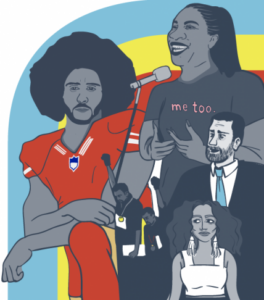 In recent years, the power of popular entertainment to inspire large audiences and shift cultural norms has become a topic of growing interest in the social advocacy space. A large body of research has been dedicated to tracking representation trends in film and television, and a growing cohort of organizations provides practical recommendations for those seeking to leverage popular culture in their advocacy work. While existing research has provided critical insights into the effectiveness of high-profile spokespeople in short-term campaigns and fundraising, significant gaps in the literature exist in terms of in-depth analysis of more symbolic actions on the part of high-profile individuals as well as measurements of the impact of celebrity influencers on long-term narrative shift.
In recent years, the power of popular entertainment to inspire large audiences and shift cultural norms has become a topic of growing interest in the social advocacy space. A large body of research has been dedicated to tracking representation trends in film and television, and a growing cohort of organizations provides practical recommendations for those seeking to leverage popular culture in their advocacy work. While existing research has provided critical insights into the effectiveness of high-profile spokespeople in short-term campaigns and fundraising, significant gaps in the literature exist in terms of in-depth analysis of more symbolic actions on the part of high-profile individuals as well as measurements of the impact of celebrity influencers on long-term narrative shift. Significant increases in news media and social media engagement with social justice issues: All three case studies revealed a marked increase in both the volume and focus on news media and social media engagement. For instance, since Colin Kaepernick and other athletes began taking a knee, news media coverage of police misconduct has nearly doubled (from an average of 4000 articles to 7000 articles published every 12 months), and social media engagement with the issue has seen a nearly three-fold increase.
Significant increases in news media and social media engagement with social justice issues: All three case studies revealed a marked increase in both the volume and focus on news media and social media engagement. For instance, since Colin Kaepernick and other athletes began taking a knee, news media coverage of police misconduct has nearly doubled (from an average of 4000 articles to 7000 articles published every 12 months), and social media engagement with the issue has seen a nearly three-fold increase. Direct or indirect policy and cultural changes in organizations and institutions: The case studies in this report have resulted in a myriad of organizational policy and cultural shifts as a direct and indirect result of the efforts of high-profile influencers. In the case of Jimmy Kimmel, the Graham-Cassidy bill was ultimately defeated. Since Kaepernick and other athletes began taking a knee in protest to police killings of unarmed people of color, the National Football League (NFL) and several teams have spoken out in support of criminal justice reform. For instance, in September 2016, shortly after Kaepernick’s first field-side protest, the San Francisco 49ers announced that it would be donating $1 million to two charities in the Bay area focused on racial and economic justice. In January2018, the NFL in conjunction with players formed the “Let’s Listen Together” coalition, which aims to improve police and community relations. As of July 2018, 10 NFL teams have announced the launch of new committees, coalitions, or other activities aimed at raising awareness and tackling social justice issues. The Me Too movement has had a similar impact. Since the Me Too movement first began to proliferate in October 2017, more than 800 high-profile figures have been publicly accused of harassment, sexual assault, rape, workplace misconduct, and other related behavior. A recent article details the range of policy changes that have been introduced across industries because of the Me Too movement. This includes the introduction of mandatory annual anti-harassment trainings for lawmakers and staff in Congress and the inclusion of so-called “Weinstein Clauses” in several large mergers and acquisitions.
Direct or indirect policy and cultural changes in organizations and institutions: The case studies in this report have resulted in a myriad of organizational policy and cultural shifts as a direct and indirect result of the efforts of high-profile influencers. In the case of Jimmy Kimmel, the Graham-Cassidy bill was ultimately defeated. Since Kaepernick and other athletes began taking a knee in protest to police killings of unarmed people of color, the National Football League (NFL) and several teams have spoken out in support of criminal justice reform. For instance, in September 2016, shortly after Kaepernick’s first field-side protest, the San Francisco 49ers announced that it would be donating $1 million to two charities in the Bay area focused on racial and economic justice. In January2018, the NFL in conjunction with players formed the “Let’s Listen Together” coalition, which aims to improve police and community relations. As of July 2018, 10 NFL teams have announced the launch of new committees, coalitions, or other activities aimed at raising awareness and tackling social justice issues. The Me Too movement has had a similar impact. Since the Me Too movement first began to proliferate in October 2017, more than 800 high-profile figures have been publicly accused of harassment, sexual assault, rape, workplace misconduct, and other related behavior. A recent article details the range of policy changes that have been introduced across industries because of the Me Too movement. This includes the introduction of mandatory annual anti-harassment trainings for lawmakers and staff in Congress and the inclusion of so-called “Weinstein Clauses” in several large mergers and acquisitions. Encouraging other high-profile individuals and members of the public to speak out: Each case study was characterized by high-profile influencers successfully encouraging others to speak out in support of or opposition to an issue. Following a series of monologues from Jimmy Kimmel, several Republican senators spoke out openly against the Graham-Cassidy bill, eventually leading to its defeat. Since Kaepernick first begin his protest in August 2016, more than 200 athletes have sat or kneeled during the national anthem. Our analysis revealed that a significant portion of news media and online discourse focused on actions and commentary of other high-profile athletes and spokespeople. In the case of the Me Too movement, not only did the personal stories of high-profile entertainers propel the issue of gendered violence into the national discourse, but also subsequent coordinated efforts of the Time’s Up campaign maintained engagement with the issue after media coverage began to wane.
Encouraging other high-profile individuals and members of the public to speak out: Each case study was characterized by high-profile influencers successfully encouraging others to speak out in support of or opposition to an issue. Following a series of monologues from Jimmy Kimmel, several Republican senators spoke out openly against the Graham-Cassidy bill, eventually leading to its defeat. Since Kaepernick first begin his protest in August 2016, more than 200 athletes have sat or kneeled during the national anthem. Our analysis revealed that a significant portion of news media and online discourse focused on actions and commentary of other high-profile athletes and spokespeople. In the case of the Me Too movement, not only did the personal stories of high-profile entertainers propel the issue of gendered violence into the national discourse, but also subsequent coordinated efforts of the Time’s Up campaign maintained engagement with the issue after media coverage began to wane.
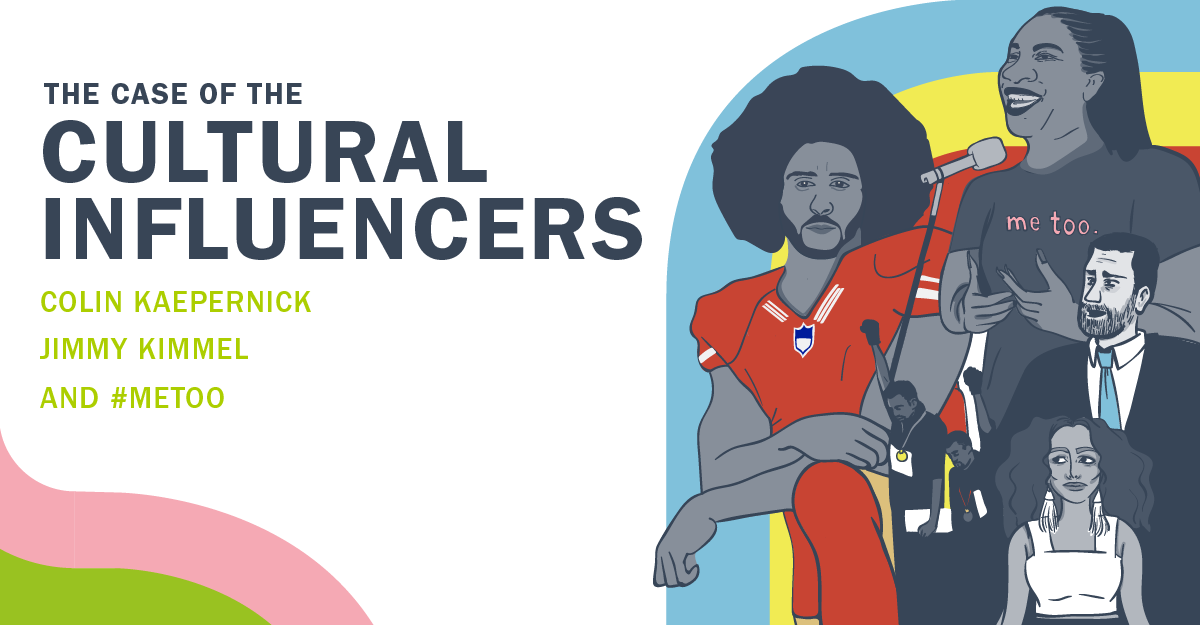
 Significant increases in news media and social media engagement with social justice issues: All three case studies revealed a marked increase in both the volume and focus on news media and social media engagement. For instance, since Colin Kaepernick and other athletes began taking a knee, news media coverage of police misconduct has nearly doubled (from an average of 4000 articles to 7000 articles published every 12 months), and social media engagement with the issue has seen a nearly three-fold increase.
Significant increases in news media and social media engagement with social justice issues: All three case studies revealed a marked increase in both the volume and focus on news media and social media engagement. For instance, since Colin Kaepernick and other athletes began taking a knee, news media coverage of police misconduct has nearly doubled (from an average of 4000 articles to 7000 articles published every 12 months), and social media engagement with the issue has seen a nearly three-fold increase. Direct or indirect policy and cultural changes in organizations and institutions: The case studies in this report have resulted in a myriad of organizational policy and cultural shifts as a direct and indirect result of the efforts of high-profile influencers. In the case of Jimmy Kimmel, the Graham-Cassidy bill was ultimately defeated. Since Kaepernick and other athletes began taking a knee in protest to police killings of unarmed people of color, the National Football League (NFL) and several teams have spoken out in support of criminal justice reform. For instance, in September 2016, shortly after Kaepernick’s first field-side protest, the San Francisco 49ers announced that it would be donating $1 million to two charities in the Bay area focused on racial and economic justice. In January2018, the NFL in conjunction with players formed the “Let’s Listen Together” coalition, which aims to improve police and community relations. As of July 2018, 10 NFL teams have announced the launch of new committees, coalitions, or other activities aimed at raising awareness and tackling social justice issues. The Me Too movement has had a similar impact. Since the Me Too movement first began to proliferate in October 2017, more than 800 high-profile figures have been publicly accused of harassment, sexual assault, rape, workplace misconduct, and other related behavior. A recent article details the range of policy changes that have been introduced across industries because of the Me Too movement. This includes the introduction of mandatory annual anti-harassment trainings for lawmakers and staff in Congress and the inclusion of so-called “Weinstein Clauses” in several large mergers and acquisitions.
Direct or indirect policy and cultural changes in organizations and institutions: The case studies in this report have resulted in a myriad of organizational policy and cultural shifts as a direct and indirect result of the efforts of high-profile influencers. In the case of Jimmy Kimmel, the Graham-Cassidy bill was ultimately defeated. Since Kaepernick and other athletes began taking a knee in protest to police killings of unarmed people of color, the National Football League (NFL) and several teams have spoken out in support of criminal justice reform. For instance, in September 2016, shortly after Kaepernick’s first field-side protest, the San Francisco 49ers announced that it would be donating $1 million to two charities in the Bay area focused on racial and economic justice. In January2018, the NFL in conjunction with players formed the “Let’s Listen Together” coalition, which aims to improve police and community relations. As of July 2018, 10 NFL teams have announced the launch of new committees, coalitions, or other activities aimed at raising awareness and tackling social justice issues. The Me Too movement has had a similar impact. Since the Me Too movement first began to proliferate in October 2017, more than 800 high-profile figures have been publicly accused of harassment, sexual assault, rape, workplace misconduct, and other related behavior. A recent article details the range of policy changes that have been introduced across industries because of the Me Too movement. This includes the introduction of mandatory annual anti-harassment trainings for lawmakers and staff in Congress and the inclusion of so-called “Weinstein Clauses” in several large mergers and acquisitions. Encouraging other high-profile individuals and members of the public to speak out: Each case study was characterized by high-profile influencers successfully encouraging others to speak out in support of or opposition to an issue. Following a series of monologues from Jimmy Kimmel, several Republican senators spoke out openly against the Graham-Cassidy bill, eventually leading to its defeat. Since Kaepernick first begin his protest in August 2016, more than 200 athletes have sat or kneeled during the national anthem. Our analysis revealed that a significant portion of news media and online discourse focused on actions and commentary of other high-profile athletes and spokespeople. In the case of the Me Too movement, not only did the personal stories of high-profile entertainers propel the issue of gendered violence into the national discourse, but also subsequent coordinated efforts of the Time’s Up campaign maintained engagement with the issue after media coverage began to wane.
Encouraging other high-profile individuals and members of the public to speak out: Each case study was characterized by high-profile influencers successfully encouraging others to speak out in support of or opposition to an issue. Following a series of monologues from Jimmy Kimmel, several Republican senators spoke out openly against the Graham-Cassidy bill, eventually leading to its defeat. Since Kaepernick first begin his protest in August 2016, more than 200 athletes have sat or kneeled during the national anthem. Our analysis revealed that a significant portion of news media and online discourse focused on actions and commentary of other high-profile athletes and spokespeople. In the case of the Me Too movement, not only did the personal stories of high-profile entertainers propel the issue of gendered violence into the national discourse, but also subsequent coordinated efforts of the Time’s Up campaign maintained engagement with the issue after media coverage began to wane.